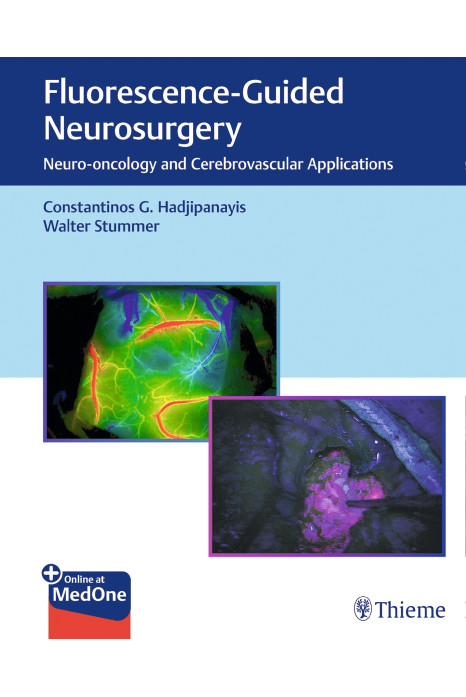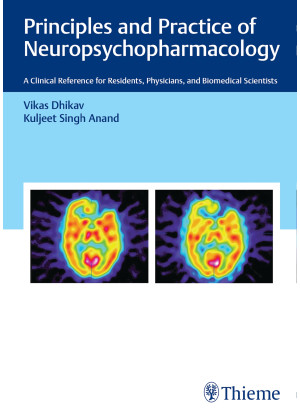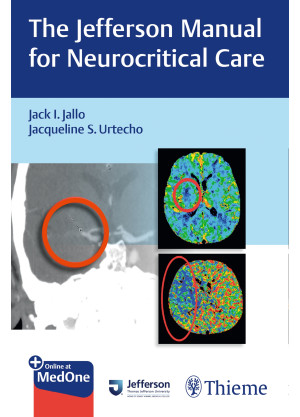The definitive textbook on state-of-the-art fluorescence-guided neurosurgery
Advances in fluorescence-guided surgery (FGS) have resulted in a paradigm shift in neurosurgical approaches to neuro-oncological and cerebrovascular pathologies. Edited by two of the foremost authorities on the topic, Fluorescence-Guided Neurosurgery: Neuro-oncology and Cerebrovascular Applications encompasses the depth and breadth of this groundbreaking, still nascent technology. The book reflects significant contributions made by world renowned neurosurgeons Constantinos Hadjipanayis, Walter Stummer, and esteemed contributors on the growing uses of 5-aminolevulinic acid (5-ALA) and other FGS agents.
The European Medicine Agency approved 5-ALA in 2007, heralding the birth of FGS globally. In 2017, the U.S. Food and Drug Administration approved 5-ALA (Gleolan) as an imaging agent to facilitate realtime detection and visualization of malignant tissue during glioma surgery. In the two decades since Dr. Stummer's initial description of 5-ALA FGS in a human patient, major strides have been made in its practical applications, leading to improved resection outcomes. As FGS is increasingly incorporated into neurosurgical practice, it holds promise for future innovations. Generously-illustrated and enhanced with online videos, this textbook is the definitive resource on the subject.
Key Features
- The improved efficacy of 5-ALA for resecting high- and low-grade gliomas, recurrences, meningiomas, brain metastases, spinal cord tumors, pediatric brain tumors, and other adult tumors
- The future of fluorescence, including potentially powerful new fluorophores molecularly targeted specifically to tumors
- The use of the fluorescent agent indocyanine green (ICG) for brain tumors, cerebral aneurysms, AVMs, and cerebral vascularization
- Special topics such as fluorescein, illuminating tumor paint, confocal microscopy, Raman spectroscopy, and integrating FGS with intraoperative imaging and brain mapping
This single accessible reference presents the current state-of-the-art on this emerging, exciting surgical technology. As such, it is a must-have for neurosurgical residents, fellows, and practicing neurosurgeons.
This book includes complimentary access to a digital copy on https://medone.thieme.com.
1 Current Fluorescence-Guided Neurosurgery and Moving Forward
2 Designing and Reporting Studies on Intraoperative Tissue Imaging in the Brain
3 5-Aminolevulinic Acid and High-Grade Gliomas
4 5-Aminolevulinic Acid and Recurrent High-Grade Gliomas
5 5-Aminolevulinic Acid in Low-Grade Gliomas
6 Intraoperative Fluorescence Guidance in Meningiomas
7 5-Aminolevulinic Acid and Brain Metastases
8 5-Aminolevulinic Acid and Indocyanine Green: Fluorescence-Guided Resection of Spinal Cord Intramedullary Tumors
9 5-Aminolevulinic Acid Utility in Pediatric Brain Tumors, Other Adult Brain Tumors, and Photodynamic Therapy
10 Fluorescein-Guided Tumor Resection in Neurosurgical Oncology
11 Fluorescein and High-Grade Gliomas
12 Second Window Indocyanine Green: Near-Infrared Optical Contrast for Intraoperative Identification of Brain Tumors
13 Cancer-Targeted Alkylphosphocholine Analogs for Intraoperative Visualization
14 Tozuleristide Fluorescence-Guided Surgery of Brain Tumors
15 Confocal Endomicroscopy
16 Fluorescence-Guided Surgery, Intraoperative Imaging, and Brain Mapping (iMRI, DTI, and Cortical Mapping)
17 Raman Spectroscopy and Brain Tumors
18 Indocyanine Green and Cerebral Aneurysms
19 Indocyanine Green Videoangiography and Arteriovenous Malformations
20 Indocyanine Green and Cerebral Revascularization














